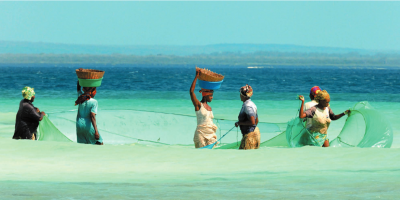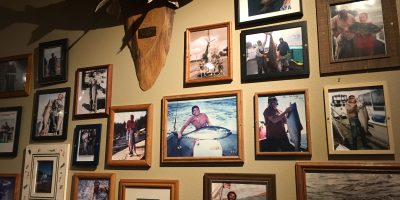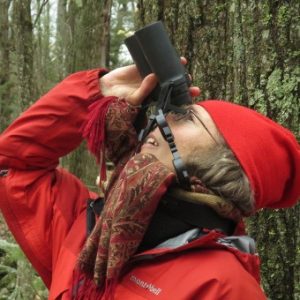Post by: Kirsten Calvert and Kris Hiromoto, UW Aquatic and Fishery Sciences undergraduate students, & Lex Savanh, Environmental Studies undergraduate
When it comes to scientific writing, the scientific jargon, the length of a paper, the titles, and the paywalls prevent the average person from being able to or actually wanting to read the results. This is especially true in a time where information can be received instantly. Our generation relies on being able to find information quickly without having to put in much effort. With this comes the danger of a relatively new phenomenon: fake news. In a world in which information is at everybody’s fingertips at all times, how can we mitigate issues such as the spread of false information? How can we bridge the gap between scientists and the general public and avoid mistruth? How can we present data from scientific research to a large audience? An environmental reporter from here in Seattle, named Lynda Mapes, is fighting this fight with each piece she writes.
Inspired by her wonder for nature, Ms. Mapes has won many regional and national awards for books she has written. Through her newspaper articles, she connects a broad audience to science and makes what can seem like daunting literature more accessible for everyone. Often there can be a disconnect between scientists and the public on the information presented in published science papers. Writers like her are working to improve communication and understanding between scientists, the public, and policy makers who are responsible for making difficult choices and deciding management strategies.
Mapes uses her writing as a platform to inform citizens of their impacts on local ecosystem health. For example, a recent study found coho salmon in the pacific Northwest are at risk of pre-spawning mortality because they are exposed to high levels of stormwater pollution as they migrate through Lake Washington and up local streams to prepare to spawn. NOAA researchers surveyed 51 sites from 2000 to 2011 to predict coho death rates. They found that in 40 percent of their range, 10% to 40% of coho salmon die before being able to spawn. Stormwater is the culprit, and in the study they created a filter of soil, bark, chips, and gravel. Coho that passed through the water that was filtered survived and those that passed through the unfiltered water did not. The stormwater is linked to vehicle traffic but researchers are unable to determine what exactly is causing coho death.
In response to these findings, she wrote an article explaining the impact of stormwater pollution on coho salmon. In doing so, she was able to connect local citizens with the science happening in their backyard and educate them on how their actions are impacting local salmon populations. To make the science more accessible to such a wide audience, she works with a team to simplify complicated scientific lingo for readers. She takes data and figures from her published sources and sends them off to her designers who help cut down on unneeded or confusing information without dumbing down the findings or misinforming the public.
Despite her efforts to communicate the truth effectively to her readers, they can be skeptical of information found online, especially when readers are quick to shout, “Fake News”. To gain the trust of her readers, she follows up with the source of information and goes out into the field to find out the truth when the public wants to learn more. An example of this comes from a story she followed about escaped farmed atlantic salmon from Cooke Aquaculture, where she reported that salmon escapees could survive, contrary to popular belief.
One of her articles received backlash from readers in the form of online commenting, phone calls, and emails. The Washington Department of Fish and Wildlife reported that farmed salmon wouldn’t be able to live in the wild and would not pose a risk to native salmon, so naturally, her readers did not believe her. Lynda responded by traveling to the Skagit River to investigate with local tribes. They found that they were catching more healthy escaped Atlantic salmon than native salmon. She reported these findings in this article and her investigation satisfied her readers by providing tangible evidence to support her findings and instill faith in her writing. When it comes down to it, she says, “nature doesn’t lie, data tells the truth.”
Writers like Lynda Mapes are working to improve communication and understanding between scientists, policy makers, and the public. These writers are necessary to expose the truth about our natural world. She said in her talk that “fake news is actually one-hundred percent real.” There’s no getting around it. No matter how much the truth hurts or how controversial it may be, Lynda says that “balance should never get in the way of the truth.” It will be interesting to see where things go from here. Just know that as long as there are faithful reporters like Lynda Mapes, the truth will get out there and the fight against fake news will continue.
References
Feist, Blake E. et al. 2017. “Roads to ruin: conservation threats to a sentinel species across an urban gradient” Ecological Applications 27(8): 2382–2396.









Emily Casaretto
Hi Kirsten, Kris, and Lex,
Great job on the blog post! I appreciate that you cover a trending issue (science communication) by exploring Lynda’s individual story as a journalist.
I wonder if you (or your classmates) have ever examined how you consume news and information? Our society has seen some drastic shifts concerning journalism in the past several decades: from print to digital media, from seeking out trusted sources to relying on Facebook newsfeeds, and from the increasing pressure to be shorter/edgier/more instantaneous, among others.
How do you go about choosing what news and media you use? Do you think that your attitudes speak for your generation in general? Why or why not? (I wonder about these kinds of things a lot as a Millennial)
Beth Phillips
Hi Emily –
We had a discussion in class yesterday about this topic. Students named a number of different sources of news (science/environmental and otherwise). Social media outlets including Reddit, Tumblr, Twitter and Facebook were all mentioned, along with the “News” iphone app where you can get notifications about chosen topics or from certain outlets (e.g., National Geographic). Other important sources included the radio, especially NPR stations and the NPR app (for local and national stories), science podcasts (including from other countries), newsletters from scientific societies, list serves for various organizations, and UW News stories. Word of mouth, stories or papers mentioned by professors in class, and attending seminars are also ways students gain information and learn about new scientific studies.
In many cases, the students said they use social media not necessarily to read the writer’s summary of the paper, but to be made aware of the existence of a new scientific paper or study results, and to have a link to click through and access the original source. On places like Twitter, following scientists and professors was popular, and on Facebook it was the ease of accessing and following a group or society’s page.
In other cases, particularly podcasts, it could be the way the story is delivered (David Attenborough-esque) or the source (a SAFS professor) that interests the students and helps them identify the validity of a story.
It seems like the diversity of sources is important, and I would add that seeing a story in multiple places may play a role in validating it (we didn’t discuss this in class), or at least amplifying it and bringing it to the student’s attention.
Some social media outlets can also serve as a “peer review” to filter through the myriad science stories, including controversial topics — by either down-voting or up-voting something, or allowing anonymous (or semi-anonymous) comments and posts. In many cases, their choice of media came down to ease of access, and cost (free winning out over subscriptions).
The students in this course are all science majors and have been taught to think critically about the source of information, but I think this is a fascinating topic and everyone would be well-served to stop and reflect on how news and information is accessed and understood.
There’s a lot more to explore. Thanks for posing this thought-provoking question!